There is a tacit assumption regarding the oracular character of the work of art in relation to the ferments of history, perhaps an altered and unconscious cultural remnant of the Kantian theory of Genius, namely that it materializes a form of sensibility that can “objectively” capture the subtle differences, perspectives and tensions that crosses the Eventful nature of the present. Under different forms of “exceptionalism” nascent under various practices of subjectivity – cultivated in art high schools, art universities, the art market; let’s not omit the Romanian model of “grace” that touches both the theatre actor and the visual artist – the artist seems to be condemned by Nature to borrow the Prophet’s garment (bestow sense), all the more so this precise determination of “rarity” can generate huge profits for the global art market industry. There is, of course, something real indicated by this assumption, a work of art can solicit the viewer to involuntarily agree to a radical experience of “sensibility” (how you perceive a sunflower after seeing the work of Van Gogh, etc.).
I made this little detour to avoid “bottomless” understandings of what I’m about to say about Lucian Hrisav’s works from the exhibition And I woke up in love with everything I couldn’t see held at H’art Gallery (opened on 07.04.2023). In accordance with the generation to which he belongs, the artist started and used the specific techniques of street art (post and neo graffiti) but, as we understood from the discussion we had a few days ago, he did not find suitable for his practice neither the medium of exposure and nor the glossy and typical chromatics necessary to „scratch” the urban gaze numbed by the hyper presence of advertising images. For personal reasons, he withdrew to the surface of the canvas for the autonomy that both the pictorial praxis (working alone in the studio) and the exhibition space (you can’t move a wall, the environment of a street art work strains too much in the economy of the work); however, he kept the airbrush and spray to “paint”[1] on canvas (although he can paint in oil or acrylic) as an identifiable, differential and specific practice of a (properly speaking) emerging artist.
The exhibited works are thematically similar and belong to a relatively recent period of studio practice and, as such, do not depart from a concept or stake articulated in advance.[2] A relevant aspect as long as the positioning in relation to the digitalization of the image (not only in the “community” powered by social media) is obviously of conflict. The thematic knot of these works is the result of the frictions, which the artist feeds disruptively, between the pictorial and the digital image. The asymmetric power relations between the two paradigms of representation mark the imperceptible violence of the dominant digital milieu as typical image manifestation (production, distribution), which invariably leads to the substitution of the depth coordinates linked to the pictorial image (from the concrete context of realization to that of reception). The digital image fulfilled the representative function of photography, within the informational environment, abandoning the characteristics of reflexive-affective reception. We can also find in the exhibition an imprecise comment on what has been lost with the new digital technology: the image no longer wants to show by guessing (guesswork), but only to reproduce exactly, inform or entertain. Image artifacts, lost signal, glitches are errors or problems of image transmission, i.e., communication and nothing else. The digital image is not only the product of an effective outsourcing of the mnemonic function (image archive and circulation), but above all the technical product of synthesis: “pixel” (+ “voxel”). The image is cellular, scalable, with numerically defined attributes (color, opacity, and place) in the matrix that divides it.
All the paintings are pixelated (RGB) at the surface of the canvas, over the “subject”, the frames are also square like a pixel, to make the reference to the DNA of the ostentatious digital image. On the other hand, the imperfections of the images rendered as the subject of the paintings, the volumetry in the fog is not a simple consequence of the composition and figurative prerogative of the pictorial, but also the translation of the subjective perception-memory modus operandi. The paintings Blades, Castle, Piers, Tree, Cymatics, Negative Column seem like monochrome dioramas in which objects loaded with an affective tonality specific to the “marine atmosphere”[3] appear cinematically; reflecting both the necessary solitude of the studio practice, and the sealed and always particular gaze open to the inexhaustible horizon of the sea, an invitation to be interpellated by a perception that has no threshold/joints. The dense orange (not pixelated) is a short circuit (in Pole Sitting) caught and framed (Ghosted – the painting is exposed on an orange wall) in the contrasting exposure of the two milieus.[4] The painting (Ultra)low Values dynamically superimposes similar results with compositionally different images, both pixelated to mark their digital destiny. Scanline captures the birth of an image in the coordinated flow of pixels, an image that rises or falls from the digital amniotic fluid. The surfaces of the paintings inscribe the differences from the digital image as they release the artist’s visual speculations about the warm, mysterious, indecisive and melancholic environment of the pictorial image, the ephemeral respite of the gaze and the mind.
Instead of a conclusion, I would mention that the work Nodal 2 marks a difference, although it keeps open the “meditations” on digital engagements, causing the sketch (the classic “framework” of color) to cash in, without any effect of depth, on the raw pixel materiality. An image equal to the materiality that constitutes and encloses it, a rough and oval surface – expression of a chromatic density (the big bang of the image) that promises both “nothingness” and “being”. Eliminating the problem of the “subject”, we are left with the flatness of the canvas, the grid and the relational values of the colors. So, what would it mean to completely pixelate a surface where you can no longer visually “move” in any way?
[1] Using the airbrush to determine oil/acrylic (painting) effects.
[2] Reflection occurs after their crystallization in a chromatic and emotional “adjustable” practice.
[3] A state similar to that of Gili Mocanu, it could be a Tomitan “spirit”, “sensitivity” or “paideuma” (haț!).
[4] The airbrushed pixels as well as the orange intrusions are an essentialized pictorial translation of this relation. As the subject of the paintings, if we interpret the situation digitally, the pictorial images are not “under” the mass of pixels, but their surface effect.
POSTED BY
Emilian Mărgărit
Emilian Mărgărit is an independent curator and since 2017 founding member of Image and Sound, Bucharest. He has a PhD in Philosophy (contemporary French Philosophy), he has published in collective v...

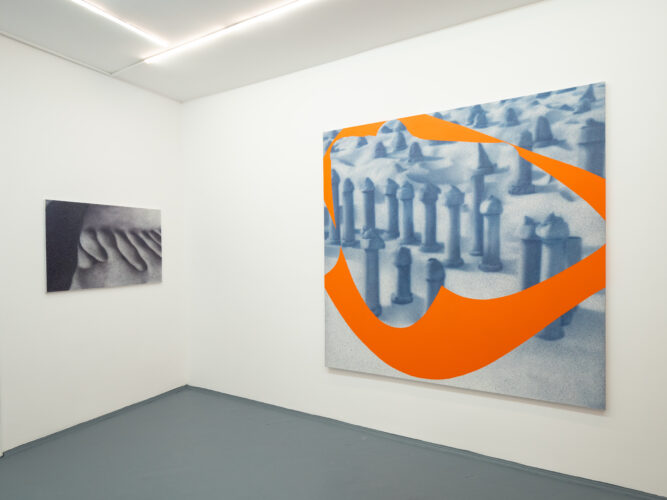
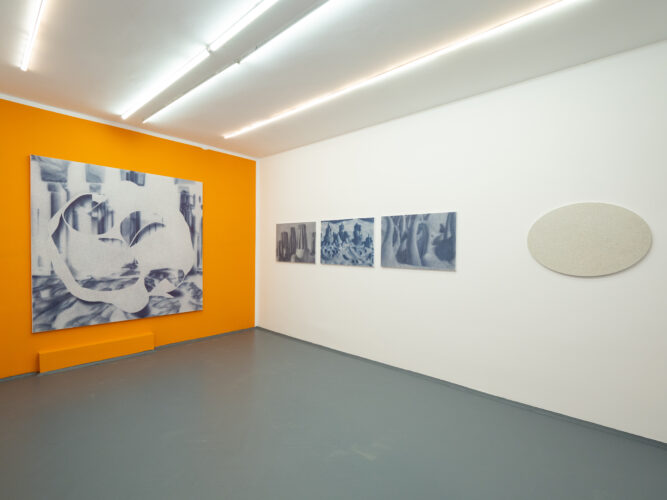
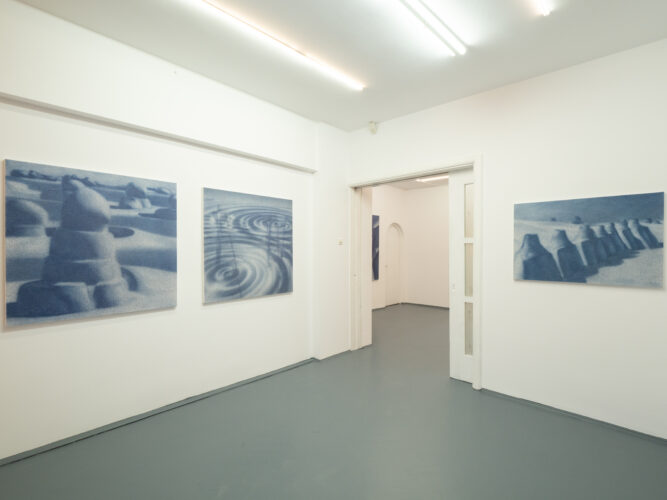
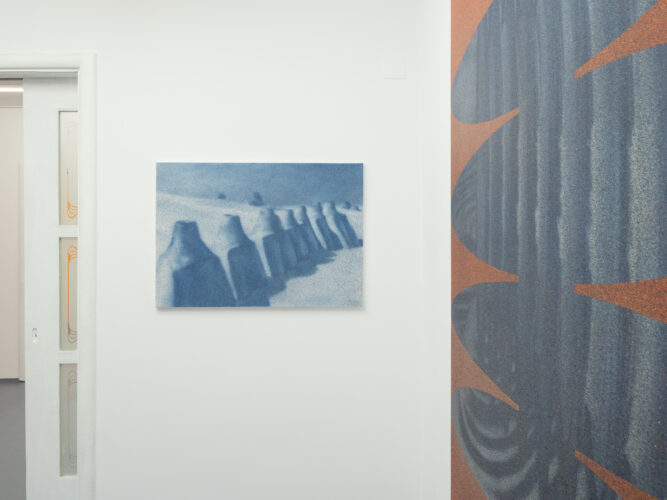
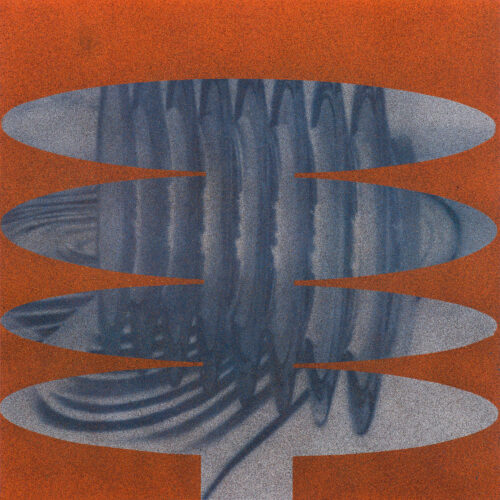
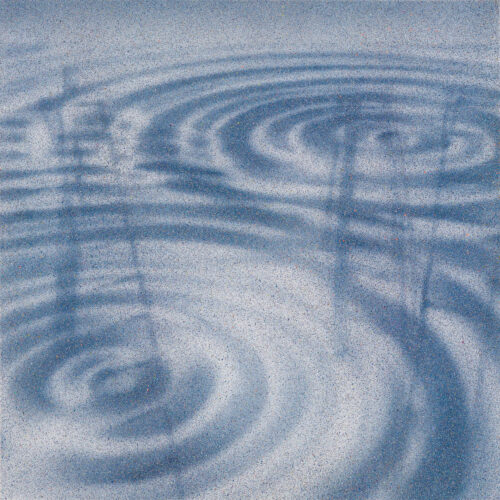
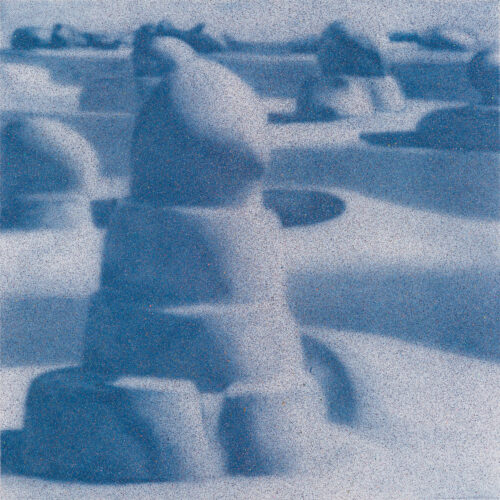
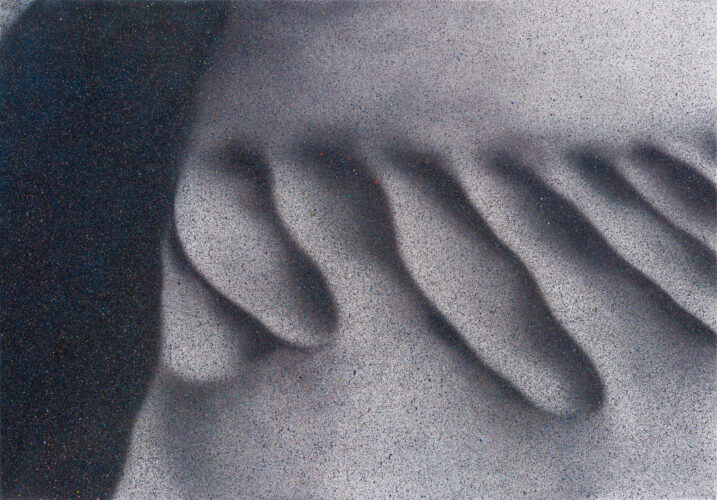
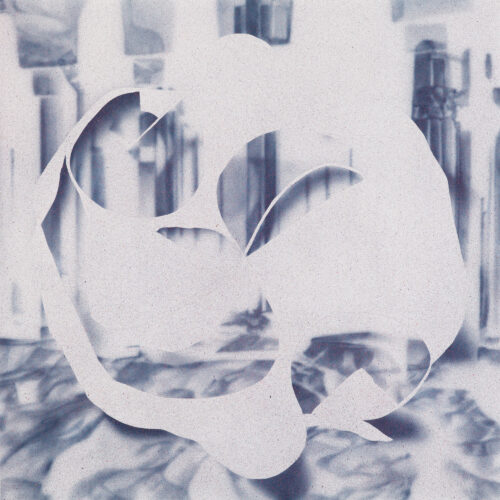
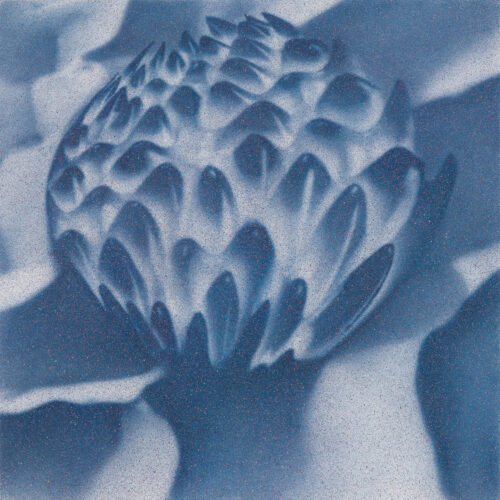
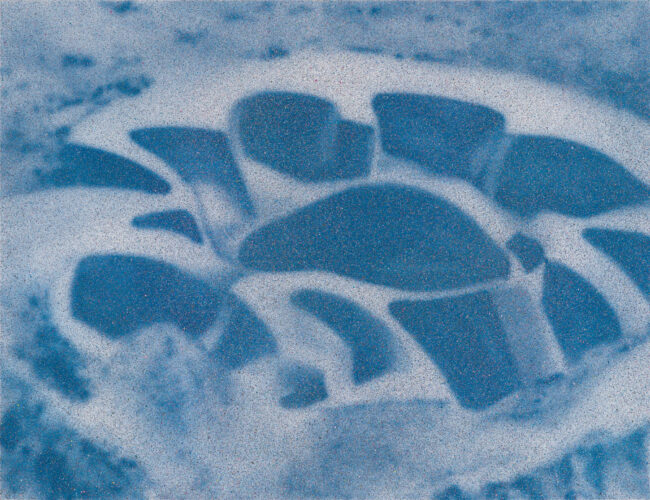
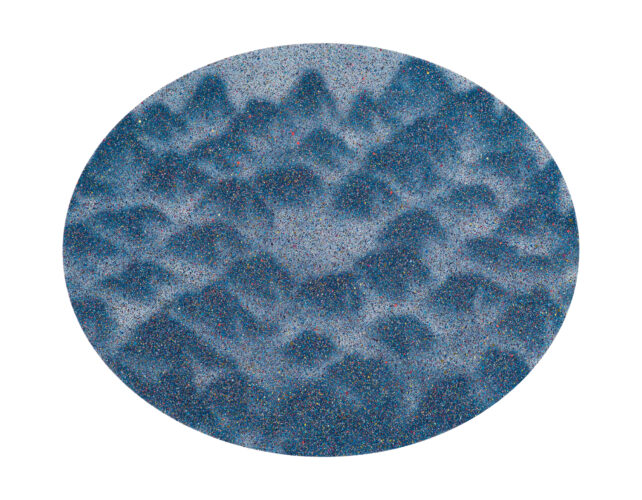
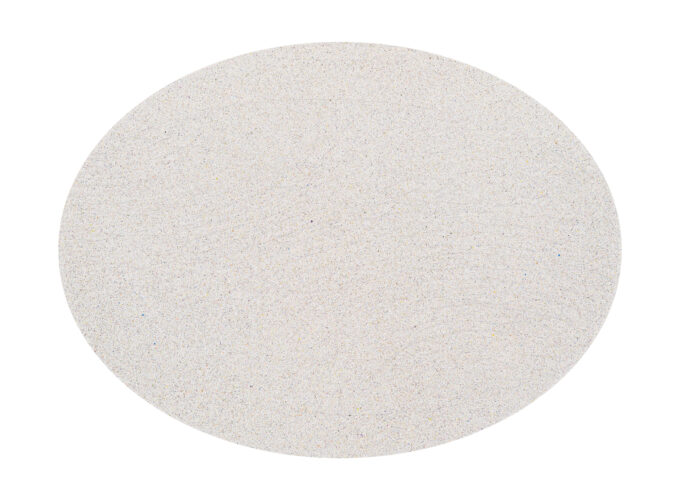
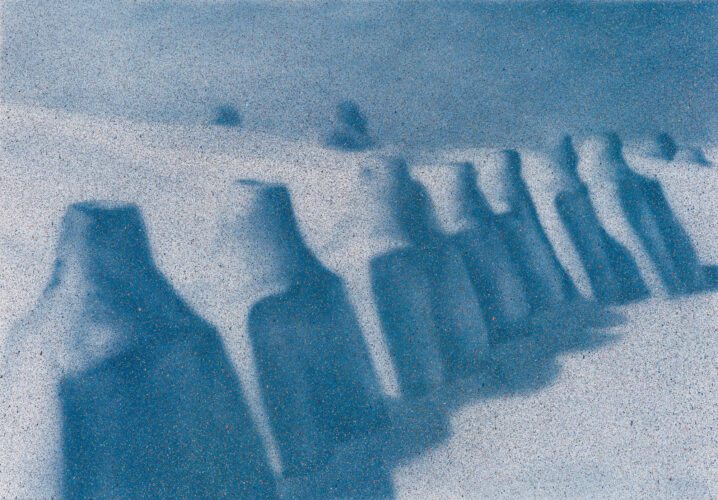
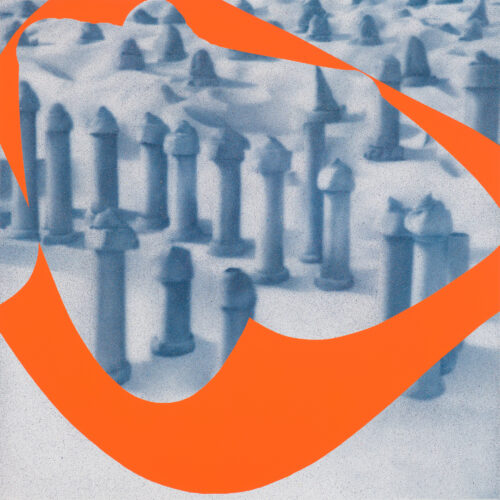
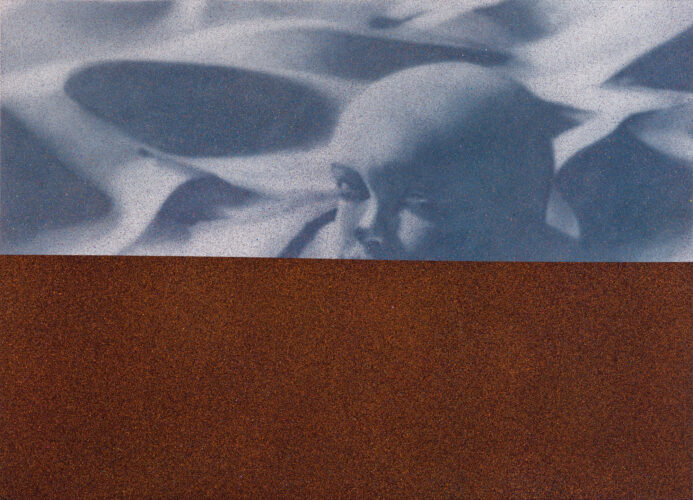


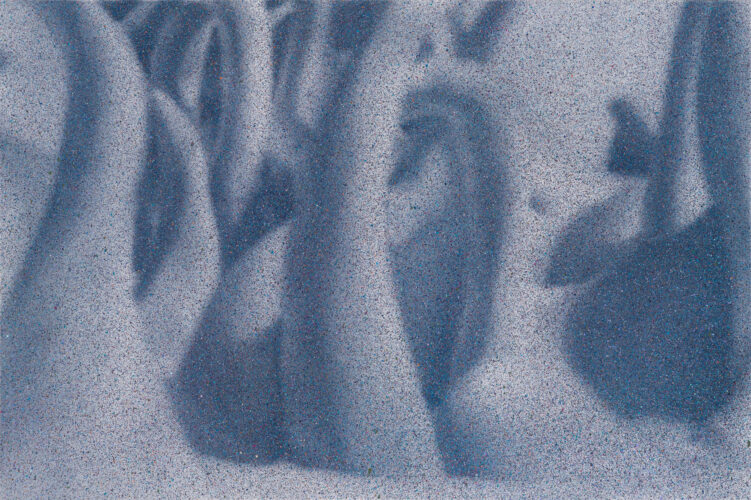

Comments are closed here.